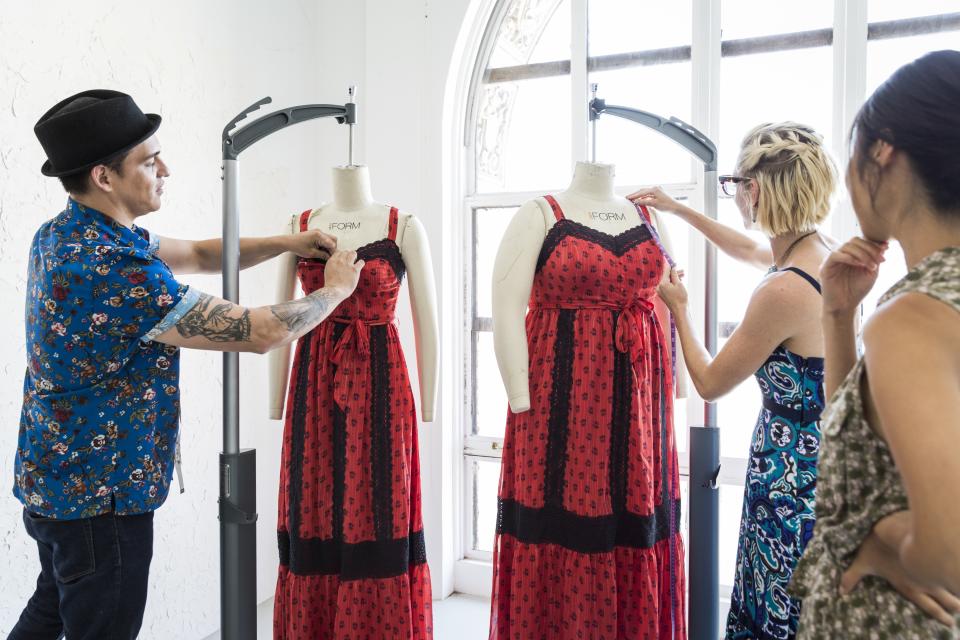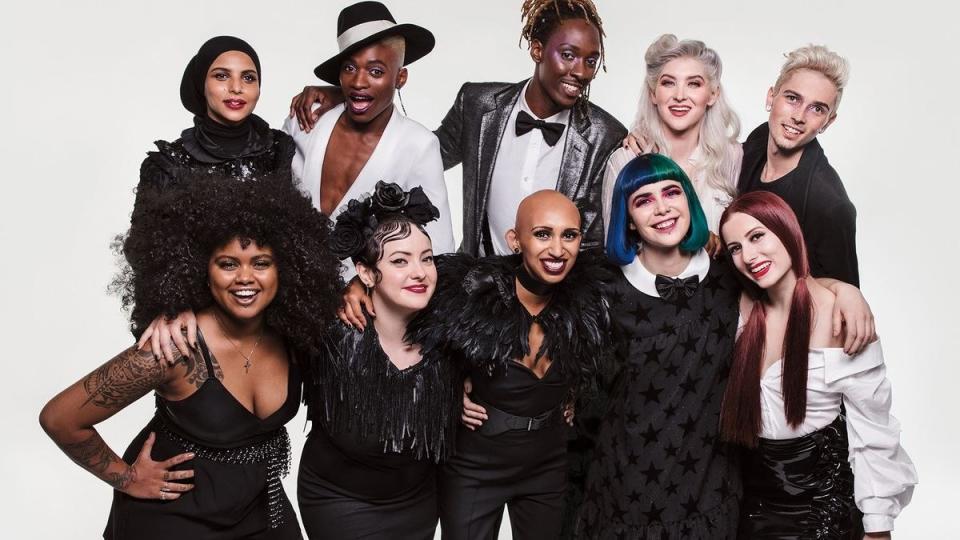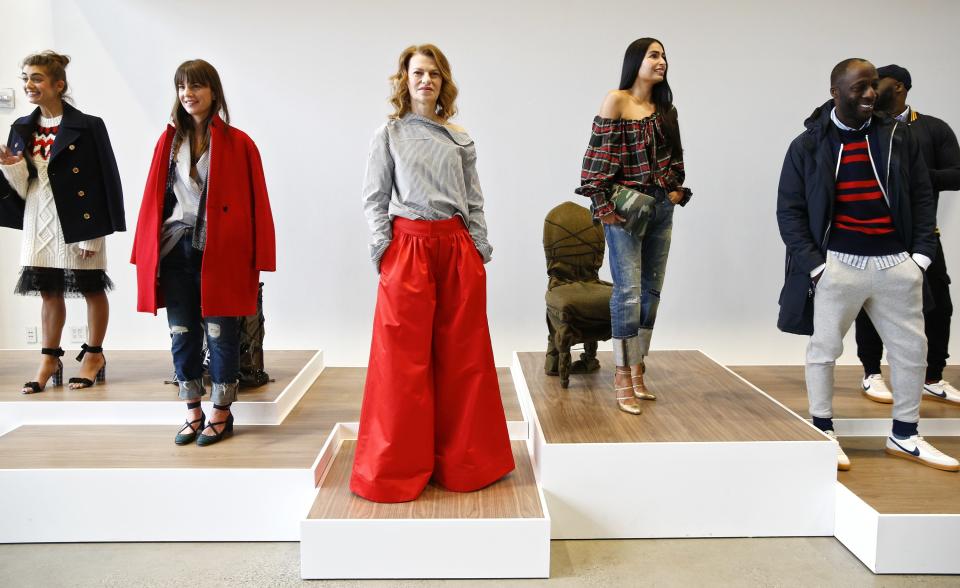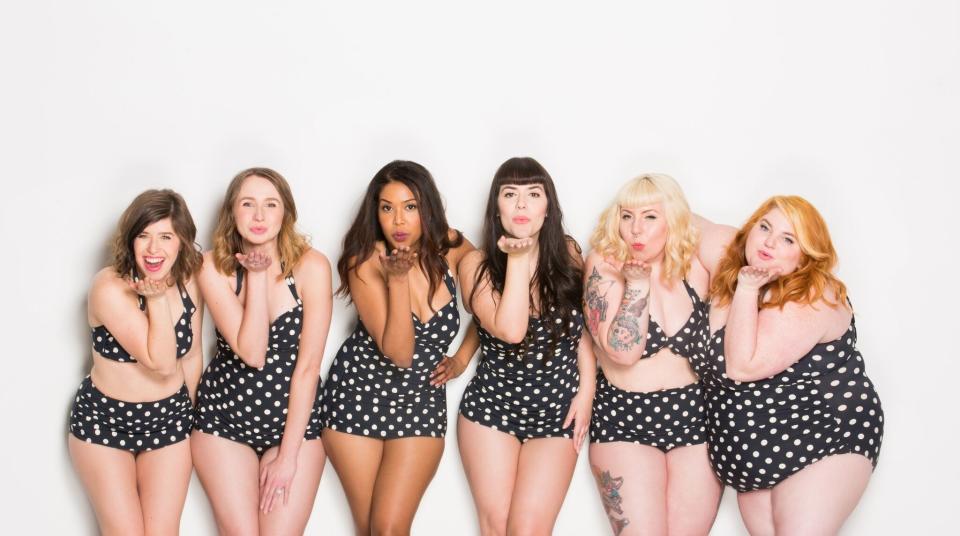Why So Many Fashion Brands Are Casting Their Own Employees in Ad Campaigns
It’s a new era for fashion and beauty ads. Spurred in part by a renewed energy around female empowerment and by the role social media plays in their lives, consumers appear to crave—and increasingly demand—authenticity from the images used to sell them clothing and makeup.
Brands often hear from shoppers when their campaigns lack diversity; celebrities sometimes speak out when they feel a photo of them has been overly manipulated. Meanwhile, Target's unretouched swimwear ads continue to be lauded; designers such as Diane von Furstenberg and Rebecca Minkoff have eschewed professional models altogether for their recent lookbooks and ads, instead highlighting a diverse crew of "real" women.
Still, diversity for diversity's sake—if not executed in a way that feels genuine and cogent—can come off as tokenism. In order to achieve authenticity, many retailers are looking at a different talent pool to cast their ads: their own employees. Not only are they relatable to customers, but they can serve a larger purpose as true brand evangelists. Who knows the company better than someone already on the payroll?

ModCloth Los Angeles Office
The strategy may feel fairly new in some industries, but it actually dates back to the mid-20th century. A good example is how Perdue—yes, purveyor of chicken—famously put its founder, Frank Perdue, in front of the camera to help personalize and sell product starting in the 1960s.
What’s different about using this strategy now, primarily in the fashion and beauty space, is that instead of just letting the consumer see the man behind the curtain, potential shoppers are seeing people who look like them using the products they might buy, turning a more traditional approach to advertising on its head.
Vintage-inspired retailer ModCloth was an early fashion pioneer of this idea: In 2015, it debuted a digital swimwear campaign featuring a diverse group of its own employees, wearing a mix of polka-dot bikinis and one-pieces in a range of sizes.
“The shoot was in response to the press surrounding the inclusion of Robyn Lawley in the 2015 Sports Illustrated Swimsuit Issue,” Nicole Haase, ModCloth’s VP of Merchandising, tells Glamour. “We wanted to provide a counterpoint because we not only had product that we felt so proud of, we wanted women to see the photos and feel good. What better way to solidify our commitment to inclusivity by wearing our swimsuits and showing them in a range of sizes?” According to the company, the campaign helped lift sales—not just for its plus swimsuits, but for all sizes. (Sales of swimsuits jumped by over 50 percent, a ModCloth rep told Glamour, while online visits to the swimwear section of ModCloth.com reportedly jumped by over 60 percent.)
ModCloth has continued to use its staff both in ads and on its Instagram feed. On the latter, it frequently posts photos of employees modeling new product so customers can get a better idea of the look and fit of their offerings. (Shopbop and Madewell have also employed a similar social strategy.) “It's an authentic way to connect with our customer," Haase says. "As merchants, if we don't believe in the product that we are assorting, then why would we think anyone would buy it?”
Over the past few seasons, J.Crew cast employees and friends of the brand spanning various ages, backgrounds, and body types in New York Fashion Week presentations and lookbooks; and makeup giant Sephora brought together sales associates from around the country for its Holiday 2017 Reach Out and Gift campaign. Sephora Chief Merchandising Officer Artemis Patrick tells Glamour: “Not only are [they] an incredibly diverse mix of individuals from different backgrounds, cities, states, and even countries, they also live and breathe beauty."

The success of Sephora and its competitors, says Patrick, depends on their ability to connect with a wide range of consumers. "The world is becoming more and more diverse, and it's critical that brands reflect that in how they go to market," she explains. "As merchants, marketers, [and] brand owners, we have to find genuine ways to represent the range of beauty perspectives, interests, preferences, and needs in order to build brand love."
Turning to employees to achieve that is a smart strategy, according to Kristi McCormick, a casting director and founder of talent consulting, casting, and licensing firm Matchbook Company. “Your own employees have a voice, and they act a testimonial," she says. "When a client is asking to cast real women, I always ask ‘Have you looked around the office?’”

J.Crew - Presentation - February 2017 - New York Fashion Week
McCormick traces the trend to her days as a bookings editor at the now-defunct (and once Condé Nast–owned) Lucky magazine, in the early aughts. “We were really the first to use editors in the pages of a magazine,” she says. “What better person is there to show off how to wear lipstick than a beauty editor who is trying hundreds of brands and shades? This is the person women want to tell them how to wear a lipstick. I just had a feeling every magazine was going to look like that eventually.”
“People want to see images of people that look like them so they can decide, ‘Is this going to look good on me and do I want to buy this?’” McCormick adds.
And it appears retailers are doubling down on this strategy—and creating full-fledged initiatives to support it. This spring, Macy's began a new program to develop its own employees into influencers for the retailer, creating video content for Macys.com and posting on social media. Dubbed the Macy's Style Crew, it began with a small pool of staff that's now being expanded, with applications open to both people who work in its corporate offices and those in its brick-and-mortar stores.
"We employ people all over the country who have incredible style and that can make them unique influencers in their community," Cassandra Jones, Macy's senior vice president of Fashion says. “Fashion bloggers have great style, of course, but so do our employees.”
Everyone from its fashion director to an Atlanta-based personal shopper can model Macy's latest spring offerings—and share it on Instagram.
When brands show faces and bodies that audiences can connect to, that feel "relatable," they're met with largely positive responses—think of the excitement surrounding Aerie's #AerieReal campaign, and CVS's recent commitment not to retouch its ads. There have been some significant strides made in advertising in the past few years, but according to experts, there's still a lot to be done. “It’s mass brands that have led the charge [with this],” says McCormick.
Marketers, take note.
Related Stories:
The Rise of the Plus-Size Face
There's a Reason You're Seeing More Curvy Models in Mass-Market Fashion Campaigns
Nina Agdal Spoke Out About Body Shaming in Fashion—and It Landed Her a New Campaign


